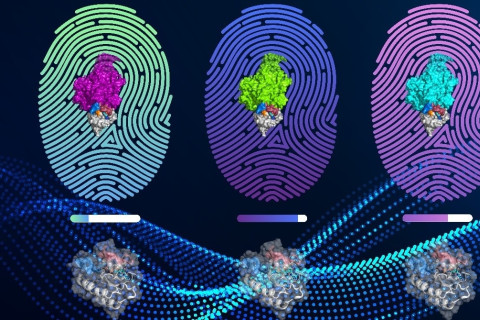- Health and well-being
Welcome to a webinar organized by the multi-disciplinary research community Drug Discovery and Delivery (DrugTech) at the University of Eastern Finland.
Professor, Dr. Vsevolod A. Peshkov will give a talk on 2-Oxo-aldehyde-derived Ugi adducts: applications in heterocyclic chemistry, materials science and asymmetric synthesis.
Welcome and concluding remarks by Chairman, Professor Antti Poso, School of Pharmacy, University of Eastern Finland. No registration required. The event will be recorded. In participating in the seminar, you automatically agree to the recording.
2-Oxo-aldehyde-derived Ugi adducts possess increased nucleophilicity of the peptidyl position compared to the standard Ugi adducts owing to an additional electron-withdrawing group introduced with 2-oxo-aldehyde. Several research groups have taken advantage of this property by designing new routes for the diversity-oriented synthesis of heterocycles through the post-Ugi transformations involving the peptidyl reactive site. We have also succeeded with advancing this approach by exploiting the triple bond as a complementary electrophilic partner in a number of enolization-driven post-Ugi cyclizations leading to the assembly of pyrrol-2-one core. Furthermore, we were the first who recognized that the applicability of 2-oxo-aldehyde-derived Ugi adducts is not limited to heterocyclic chemistry. For example, we have taken advantage of a 1,3-dicarbonyl moiety present in these substrates by engaging them in an enolization-triggered complexation with boron trifluoride diethyl etherate. The resulting O,O-chelated boron complexes turned out to be strong solid-state emitters featuring clear aggregation-induced emission (AIE) characteristics, the property that was first described by Tang and coworkers as opposite to the aggregation-caused quenching (ACQ). Very recently, we have explored a possibility of an asymmetric modification of 2-oxo-aldehyde-derived Ugi adducts towards the formation of enantioenriched peptidomimetics. In this way, we were able to introduce a new strategy for controlling the stereochemistry in Ugi adducts. Instead of controlling stereochemistry directly during the Ugi reaction we have shown that the chiral center at the peptidyl position can be stereodefined through the post-Ugi functionalization. In order to achieve that, we have utilized the enantioselective electrophilic fluorination of carbonyl compounds promoted by Cinchona alkaloid derivatives developed independently by Shibata, Takeuchi and coworkers and by the group of Cahard.
Prof. Dr. Vsevolod A. Peshkov received his diploma in chemistry in 2008 from Lomonosov Moscow State University with Prof. Nikolay V. Lukashev and his doctoral degree in 2013 from the University of Leuven (KU Leuven) with Prof. Erik V. Van der Eycken. He then spent one year at the University of Pittsburgh working on several medicinal chemistry projects under Prof. Peter Wipf and Prof. Donna Huryn’s direction. In September 2014, he began his independent career at Soochow University, China. In August 2018, he took on the position of assistant professor and chemistry graduate program director at Nazarbayev University, Kazakhstan. Dr. Peshkov possesses over 10 years of active research experience and has co-authored 45 scientific publications. His research centers on a diversity-oriented synthesis (DOS) of complex heterocyclic molecules using multicomponent, one-pot and tandem strategies. In addition, his research group is active in design and synthesis of novel organic photoluminescent materials and their optical properties assessment.
